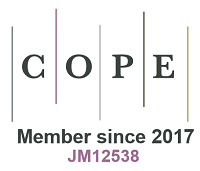Evaluating the Rutting Resistance of Asphalt Mixtures Containing Waste Steel and Treated Recycled Concrete Aggregate
DOI:
https://doi.org/10.28991/CEJ-2024-010-11-011Keywords:
HAM, RCA, Waste Steel, Rutting, Wheel Tracking Test, Dynamic Stability.Abstract
Using treated recycled concrete aggregate (RCA) in asphalt with waste steel reinforcement benefits the economy and the environment while delaying asphalt pavement deterioration. This study examined the impact of using RCA in several percentages reinforced by three dosages of waste steel: 0.3, 0.6, and 0.9 added as a proportion of mixture weight. The RCA was immersed in a 0.1M Hydrochloric acid solution for one day to treat the weak cement mortar in RCA and reduce the thickness of this layer. The assessment was carried out in a laboratory using the typical Marshall test to determine the optimum quantity of asphalt contents, the volumetric properties of asphalt mixtures, and the wheel tracking test; the study involved ten rectangular slabs measuring 30í—40í—5 cm, and they were repeatedly subjected to 700 N wheel loads at 55°C to test their rut resistance. According to the study, while Marshall's stability increased, adding waste steel and RCA did not significantly alter the volumetric properties of asphalt mixes. The greatest improvement in Marshall stability, 45.18% over the conventional mix, was seen in the mix, including 75% RCA and 0.9% waste steel. The rutting performance decreased with the addition of RCA and rose with the inclusion of waste steel. The results indicate that adding waste steel to asphalt mixtures effectively increases the rutting resistance. The mixture with 50% RCA and 0.9% waste steel showed less rutting depth of 25.01% than the conventional mix.
Doi: 10.28991/CEJ-2024-010-11-011
Full Text: PDF
References
[2] Almuhmdi, A. D. M., Muhmood, A. A., & Salih, A. O. (2021). Effects of Crushed Glass Waste as a Fine Aggregate on Properties of Hot Asphalt Mixture. Tikrit Journal of Engineering Sciences, 28(3), 129–145. doi:10.25130/tjes.28.3.10.
[3] Burhan, H., & Ismael, M. Q. (2019). Effect of PolyPhosphoric Acid on Rutting Resistance of Asphalt Concrete Mixture. Civil Engineering Journal (Iran), 5(9), 1929–1940. doi:10.28991/cej-2019-03091383.
[4] Song, J., & Pellinen, T. (2007). Dilation Behavior of Hot Mix Asphalt under Triaxial Loading. Road Materials and Pavement Design, 8(1), 103–125. doi:10.3166/rmpd.8.103-125.
[5] Zhang, J., & Yang, J. (2017). Experimental and Numerical Investigation of Dilation Behavior of Asphalt Mixture. International Journal of Geomechanics, 17(2), 04016062. doi:10.1061/(asce)gm.1943-5622.0000738.
[6] Ismael, M. Q., Fattah, M. Y., & Jasim, A. F. (2021). Improving the rutting resistance of asphalt pavement modified with the carbon nanotubes additive. Ain Shams Engineering Journal, 12(4), 3619–3627. doi:10.1016/j.asej.2021.02.038.
[7] Sapkota, K., Yaghoubi, E., Wasantha, P. L. P., Van Staden, R., & Fragomeni, S. (2023). Mechanical Characteristics and Durability of HMA Made of Recycled Aggregates. Sustainability (Switzerland), 15(6), 5594. doi:10.3390/su15065594.
[8] Daquan, S., Yang, T., Guoqiang, S., Qi, P., Fan, Y., & Xingyi, Z. (2018). Performance evaluation of asphalt mixtures containing recycled concrete aggregates. International Journal of Pavement Engineering, 19(5), 422–428. doi:10.1080/10298436.2017.1402594.
[9] Taher, Z. K., & Ismael, M. Q. (2023). Moisture Susceptibility of Hot Mix Asphalt Mixtures Modified by Nano Silica and Subjected to Aging Process. Journal of Engineering, 29(4), 128–143. doi:10.31026/j.eng.2023.04.09.
[10] Saleem, A. A., & Ismael, M. Q. (2020). Assessment resistance potential to moisture damage and rutting for HMA mixtures reinforced by steel fibers. Civil Engineering Journal (Iran), 6(9), 1726–1738. doi:10.28991/cej-2020-03091578.
[11] Al-Shaybani, M. A. H. (2018). Wheel track test to predict permanent deformation (rutting depth) of hot-mix asphalt pavements and using silica fume to reduce effect of permanent deformation. Journal of Karbala University, 16(1), 104-113.
[12] Hussein, F. K., Ismael, M. Q., & Huseien, G. F. (2023). Rock Wool Fiber-Reinforced and Recycled Concrete Aggregate-Imbued Hot Asphalt Mixtures: Design and Moisture Susceptibility Evaluation. Journal of Composites Science, 7(10), 428. doi:10.3390/jcs7100428.
[13] Abd Alhay, B. A., & Jassim, A. K. (2020). Steel Slag Waste Applied to Modify Road Pavement. Journal of Physics: Conference Series, 1660(1), 012067. doi:10.1088/1742-6596/1660/1/012067.
[14] Al-Humeidawi, B. H. (2016). Experimental Characterization of Rutting Performance of HMA Designed with Aggregate Gradations According to Superpave and Marshall Methods. World Journal of Engineering and Technology, 04(03), 477–487. doi:10.4236/wjet.2016.43048.
[15] Hainin, M. R., Aziz, M. A., Ali, Z., Jaya, R. P., El-Sergany, M. M., & Yaacoba, H. (2015). Steel slag as a road construction material. Jurnal Teknologi, 73(4), 33–38. doi:10.11113/jt.v73.4282.
[16] Cross, S. A., Adu-Osei, A., Hainin, M. R., & Fredrichs, R. K. (1999). Effects of gradation on performance of asphalt mixtures. 78th Annual Meeting of the Transportation Research Board, 10-14 January, 1999, Washington, United States.
[17] Alabi, S. A., & Afolayan, J. O. (2013). Investigation on the potentials of cupola furnace slag in concrete. International Journal of Integrated Engineering, 5(2), 59–62.
[18] Arul, R., Vidhya, A., Karthikeyan, K., & Uthayakumar, P. (2016). Study on strength of concrete by using recycled aggregate from demolition waste in concrete. International Journal of Research in Engineering and Technology, 5(6), 176-181. doi:10.15623/ijret.2016.0506034.
[19] Nejad, F. M., Azarhoosh, A. R., & Hamedi, G. H. (2014). The Effects of Using Recycled Concrete on Fatigue Behavior of Hot Mix Asphalt. Journal of Civil Engineering and Management, 19(Supplement_1), S60–S68. doi:10.3846/13923730.2013.801892.
[20] Al-Bayati, N. K., & Ismael, M. Q. (2023). Effect of differently treated recycled concrete aggregates on Marshall properties and cost-benefit of asphalt mixtures. Sustainable Engineering and Innovation, 5(2), 127–140. doi:10.37868/sei.v5i2.id201.
[21] Lee, C. H., Du, J. C., & Shen, D. H. (2012). Evaluation of pre-coated recycled concrete aggregate for hot mix asphalt. Construction and Building Materials, 28(1), 66–71. doi:10.1016/j.conbuildmat.2011.08.025.
[22] Bhusal, S., Li, X., & Wen, H. (2011). Evaluation of Effects of Recycled Concrete Aggregate on Volumetrics of Hot-Mix Asphalt. Transportation Research Record: Journal of the Transportation Research Board, 2205(1), 36–39. doi:10.3141/2205-05.
[23] Sanya, O. T., & Shi, J. (2023). Ultra-high-performance fiber reinforced concrete review: constituents, properties, and applications. Innovative Infrastructure Solutions, 8(7), 188. doi:10.1007/s41062-023-01154-1.
[24] Cho, Y. H., Yun, T., Kim, I. T., & Choi, N. R. (2011). The application of Recycled Concrete Aggregate (RCA) for Hot Mix Asphalt (HMA) base layer aggregate. KSCE Journal of Civil Engineering, 15(3), 473–478. doi:10.1007/s12205-011-1155-3.
[25] Al-Bayati, H. K. A., Tighe, S. L., & Achebe, J. (2018). Influence of recycled concrete aggregate on volumetric properties of hot mix asphalt. Resources, Conservation and Recycling, 130, 200–214. doi:10.1016/j.resconrec.2017.11.027.
[26] Abass, B. J., & Albayati, A. H. (2020). Influence of recycled concrete aggregate treatment methods on performance of sustainable warm mix asphalt. Cogent Engineering, 7(1), 1718822. doi:10.1080/23311916.2020.1718822.
[27] Katz, A. (2004). Treatments for the Improvement of Recycled Aggregate. Journal of Materials in Civil Engineering, 16(6), 597–603. doi:10.1061/(asce)0899-1561(2004)16:6(597).
[28] Noguchi, T., & Tamura, M. (2001). Concrete design towards complete recycling. Structural Concrete, 2(3), 155–167. doi:10.1680/stco.2.3.155.40107.
[29] Tam, V. W. Y., Tam, C. M., & Le, K. N. (2007). Removal of cement mortar remains from recycled aggregate using pre-soaking approaches. Resources, Conservation and Recycling, 50(1), 82–101. doi:10.1016/j.resconrec.2006.05.012.
[30] Al-Saad, A. A., & Ismael, M. Q. (2022). Rutting Prediction of Hot Mix Asphalt Mixtures Reinforced by Ceramic Fibers. Journal of Applied Engineering Science, 20(4), 1345–1354. doi:10.5937/jaes0-38956.
[31] Çetin, S. (2014). Evaluation on the usability of structure steel fiber-reinforced bituminous hot mixtures. Construction and Building Materials, 64, 414–420. doi:10.1016/j.conbuildmat.2014.04.093.
[32] Alfalah, A., Offenbacker, D., Ali, A., Decarlo, C., Lein, W., Mehta, Y., & Elshaer, M. (2020). Assessment of the Impact of Fiber Types on the Performance of Fiber-Reinforced Hot Mix Asphalt. Transportation Research Record, 2674(4), 337–347. doi:10.1177/0361198120912425.
[33] Albayati, N., & Qader-Ismael, M. (2024). Rutting performance of asphalt mixtures containing treated RCA and reinforced with carbon fibers. Aibi, Revista de Investigacion Administracion e Ingenierias, 12(1), 18–28. doi:10.15649/2346030X.3436.
[34] Köfteci, S. (2018). Experimental Study on the Low-Cost Iron Wire Fiber Reinforced Asphalt Concrete. Teknik Dergi, 29(4), 8515–8535. doi:10.18400/tekderg.350135.
[35] SCRB. (2003). Standard Specifications for Roads and Bridges, Section R/9, Hot-Mix Asphaltic Concrete Pavement. The State Corporation for Roads and Bridges, Ministry of Housing and Construction, Baghdad, Iraq.
[36] Guo, J. F. (2014). The effect of steel fiber on the road performance of asphalt concrete. Applied Mechanics and Materials, 584–586, 1342–1345. doi:10.4028/www.scientific.net/AMM.584-586.1342.
[37] Ugla, S. K., & Ismael, M. Q. (2023). Evaluating the Moisture Susceptibility of Asphalt Mixtures Containing RCA and Modified by Waste Alumina. Civil Engineering Journal (Iran), 9, 250–262. doi:10.28991/CEJ-SP2023-09-019.
[38] Abdulkhaleq Mahdi, A., & Qadir Ismael, M. (2019). Rutting Resistance Potential of High Modulus Asphalt Concrete Pavements. Journal of Engineering and Applied Sciences, 14(12), 4183–4190. doi:10.36478/jeasci.2019.4183.4190.
[39] Xu, X., Luo, Y., Sreeram, A., Wu, Q., Chen, G., Cheng, S., Chen, Z., & Chen, X. (2022). Potential use of recycled concrete aggregate (RCA) for sustainable asphalt pavements of the future: A state-of-the-art review. Journal of Cleaner Production, 344(2), 130893. doi:10.1016/j.jclepro.2022.130893.
[40] Al-Bayati, N. K., & Ismael, M. Q. (2024). Rutting Prediction of Asphalt Mixtures Containing Treated and Untreated Recycled Concrete Aggregate. Journal of Engineering, 30(02), 105–117. doi:10.31026/j.eng.2024.02.07.
[41] Zhang, H., Yang, X., Li, Y., Fu, Q., & Rui, H. (2022). Laboratory Evaluation of Dynamic Characteristics of a New High-Modulus Asphalt Mixture. Sustainability, 14(19), 11838. doi:10.3390/su141911838.
[42] Kyokai, N.D. (2007). Pavement Investigation and Testing Methods Handbook. Hosou Chousa Shikenhou Binran, 3, Japan Road Association, Tokyo, Japan.
[43] Ismael, M., Fattah, M. Y., & Jasim, A. F. (2022). Permanent Deformation Characterization of Stone Matrix Asphalt Reinforced by Different Types of Fibers. Journal of Engineering, 28(2), 99–116. doi:10.31026/j.eng.2022.02.07.
Downloads
Published
Issue
Section
License
- authors retain all copyrights - authors will not be forced to sign any copyright transfer agreements
- permission of re-useThis work (including HTML and PDF Files) is licensed under a Creative Commons Attribution 4.0 International License.







